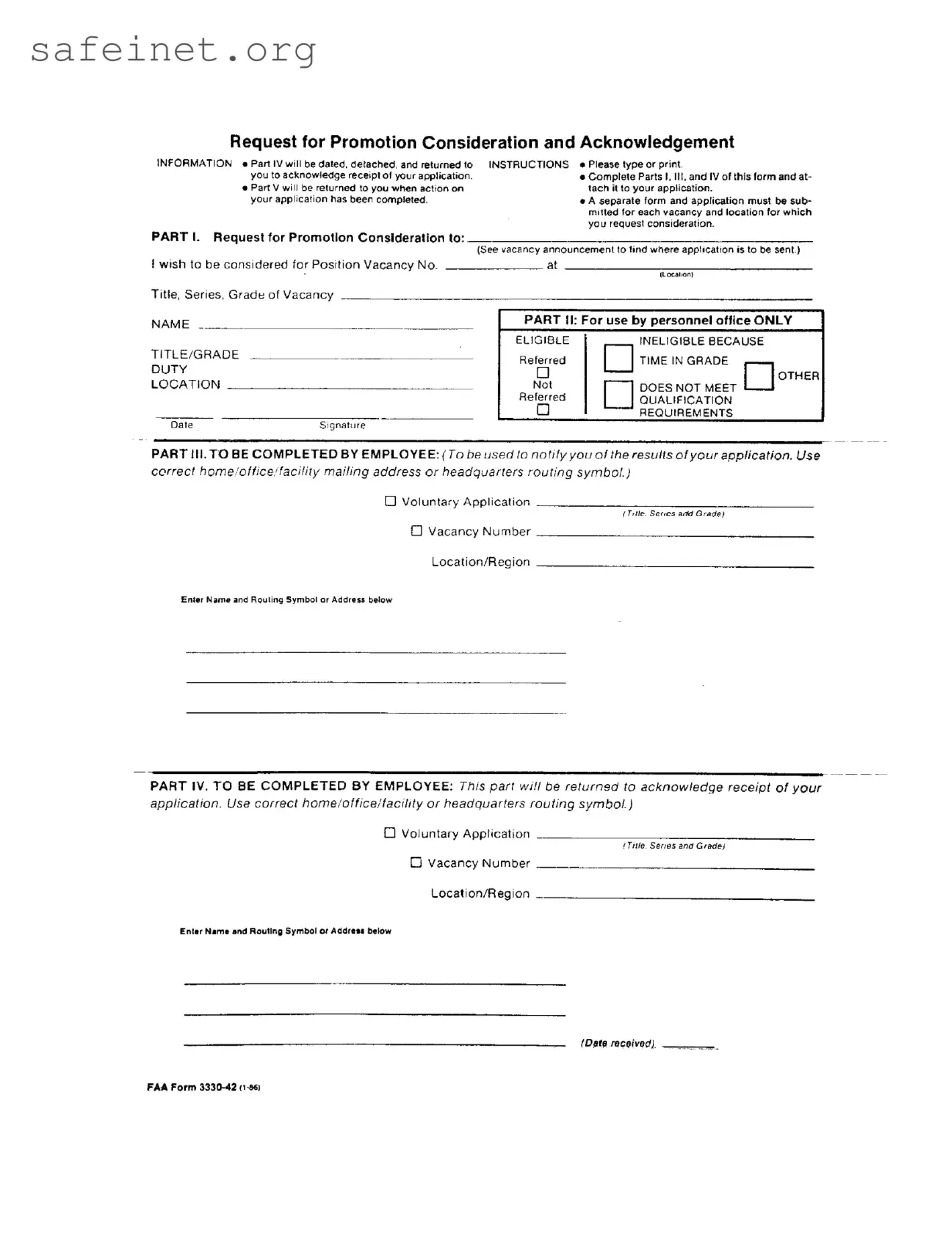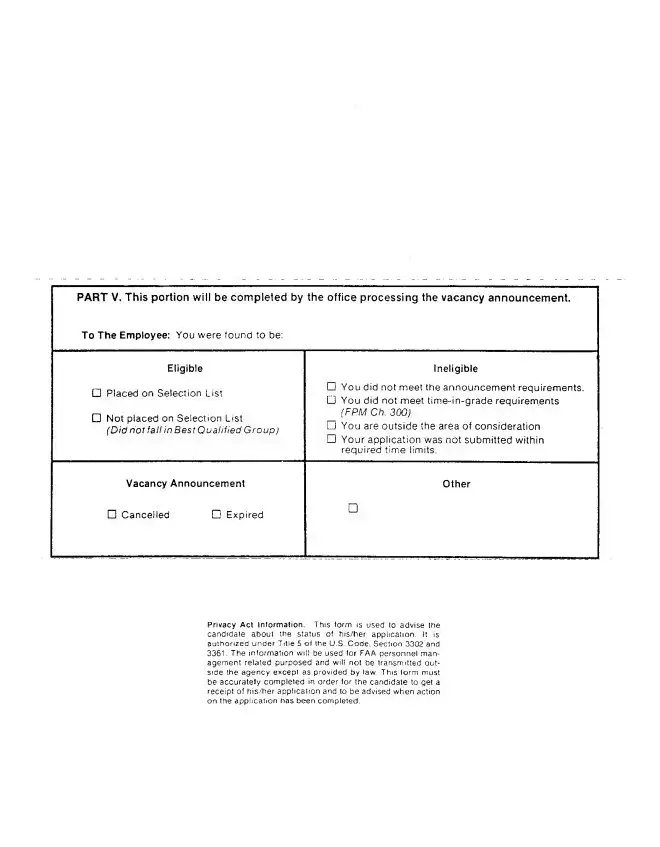The SF-171, known as the Application for Federal Employment, shares similarities with Form FAA 3330-42 in that both are used to apply for federal job vacancies. Potential employees fill out the SF-171 by providing personal information, work history, and qualifications. Just like the FAA form, the SF-171 requires applicants to submit it separately for each position they seek, ensuring that all applications are tailored to specific job announcements.
The OF-612, also called the Optional Application for Federal Employment, serves a purpose akin to that of the FAA 3330-42 by enabling individuals to express their interest in federal job openings. This form offers applicants flexibility as it allows them to outline relevant skills and experience in a narrative format. Similar to the FAA form, applicants must submit the OF-612 for each individual vacancy, emphasizing the individualized nature of job applications.
The Standard Form 50, which documents personnel actions such as promotions and separations within the federal workforce, mirrors the functions of the FAA 3330-42 in terms of tracking employee status. While the FAA form is a request for consideration, the SF-50 serves to record the outcome of such requests. Both documents ensure that federal employees are informed about their employment status and any changes therein.
The USAJOBS Resume Builder allows applicants to create a comprehensive resume specifically for federal job applications. This tool relates closely to the FAA 3330-42 as it guides applicants through presenting their qualifications in a manner suitable for the federal employment process. Just as the FAA form requires specific information to be filled out, the Resume Builder promotes a structured way to compile applicant information before submission.
The DD Form 214 is a document issued to military personnel upon separation, outlining their service history and any received benefits. While not a job application form like the FAA 3330-42, it plays a crucial role in employment, particularly for veterans seeking positions within federal agencies. Both documents are essential for understanding eligibility and qualifications within the federal job sector.
The Form I-9, which verifies an employee's identity and authorization to work in the United States, bears resemblance to FAA 3330-42 in that it requires individuals to provide personal information to advance in the employment process. Ensuring compliance with employment eligibility can influence hiring decisions in the same way detailed in the FAA form and demonstrates the ongoing requirement for documentation in government employment.
The SF-15, Request for Veteran Preference, is another relevant document. Applying for veteran preference is often an avenue sought by military veterans when pursuing federal positions. This form parallels the FAA 3330-42 as it signals a request for consideration under specific criteria that could affect hiring outcomes. Completing this form is a necessary step for veterans in improving their chances of acquiring government jobs.
The Form SF-181, Ethnicity and Race Identification, is utilized to voluntarily provide demographic information, similar to how the FAA 3330-42 collects personal data for promotional consideration. While the SF-181 focuses on classification for affirmative action purposes, both forms contribute to the broader understanding of applicant demographics within the federal hiring process.
The GS-13 or Similar Position Promotion Request Form is similar in essence to the FAA 3330-42 by facilitating requests for promotions within federal service. Staff members often utilize this type of form to seek advancement and recognition for their work, akin to how individuals complete the FAA form to express their interest in specific job vacancies. Both documents help ensure that the process of promotion and employment is conducted fairly and transparently.
The Employment Verification Form can also be seen as comparable, as it confirms that a candidate meets the necessary qualifications for a specific position or promotion. Both forms support the individual's application process by confirming eligibility and ensuring that applicants are vetted according to job requirements. They serve vital functions in verifying necessary qualifications and personal data in pursuit of employment.


